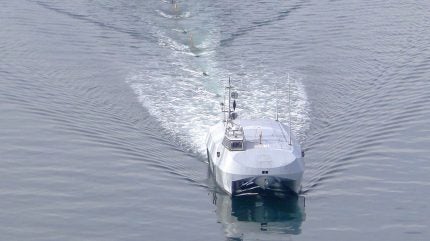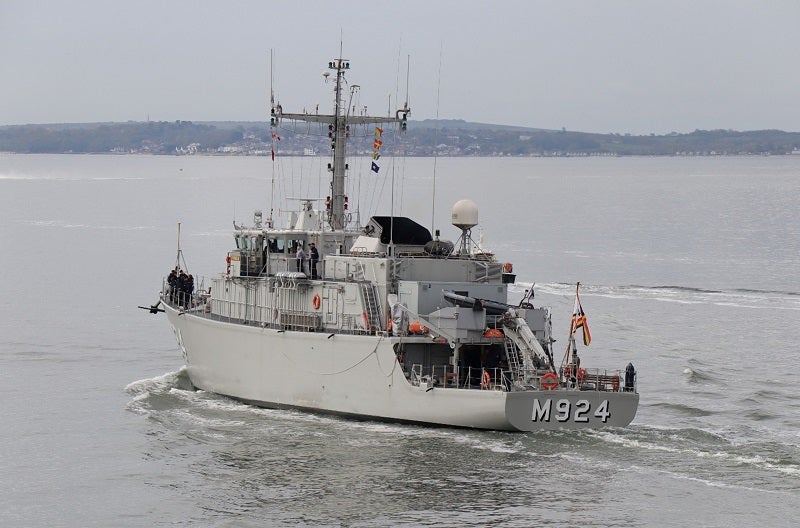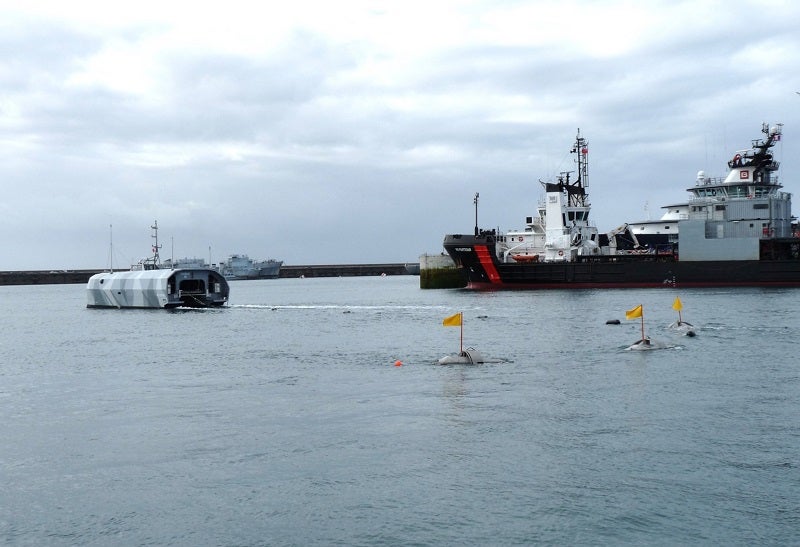
The European Defence Agency (EDA) has launched the third phase of its minesweeping project on 1 July 2024, in which these countries will address what mine countermeasure (MCM) operations will look like in the coming years.
For its part, the EDA has put forward its own ‘Modular Lightweight Minesweeper’ (MLM) concept building on two previous development phases between 2011-14 and in 2018-21. The main objective is to further raise the technology readiness level of relevant systems and to demonstrate the use of modular lightweight minesweeping in an operational setting.

Discover B2B Marketing That Performs
Combine business intelligence and editorial excellence to reach engaged professionals across 36 leading media platforms.
This third phase, which has a budget of around €9.2m ($10m), brings together six member states: Belgium, Germany, France, Finland and Poland – all led by Norway.
Europe replaces ageing MCM fleets
Currently, Belgium, France and the Netherlands have several Tripartite-class minehunters, which have reached 40-years of service, spearheading their MCM operations.
In their wake, France will replace them with legacy A27 uncrewed underwater vehicles (UUVs) that have been in service since 2012. Although, due to their age, the service will procure six new support ships to increase their endurance by 100 miles, allowing them to venture beyond Brest harbour, Brittany.

Later, the French Navy will acquire an undetermined number of next-generation A18 systems to take over the legacy systems.

US Tariffs are shifting - will you react or anticipate?
Don’t let policy changes catch you off guard. Stay proactive with real-time data and expert analysis.
By GlobalDataMeanwhile, Belgium and the Netherlands have entered into a cooperation agreement whereby their two navies will build 12 new auxiliary ships to replace their ageing fleets. Their new vessels will be equipped with launch and recovery systems for mine clearance drones; these are scheduled to be completed in 2032.
MCM will lean on uncrewed systems
Most concepts for new MCM capabilities are based on a flexible solution with autonomous and remotely operated sweeping systems, but the technology is not mature enough to be adopted by most nations.
GlobalData intelligence indicates that the global military uncrewed maritime vehicles market, valued at $1.7bn in 2024, is projected to grow at a compound annual growth rate of 8.9% over the forecast period. It is expected to reach $4.1bn by 2034 and cumulatively value $29.3bn over the forecast period. The market consists of two categories: USVs and UUVs.
Among geographic segments, Europe is projected to dominate the sector with a share of 38.4%, followed by Asia-Pacific and North America with shares of 31.8% and 20.6%, respectively.
Lightweight minesweeping
The aim for future mine sweeping solutions is to develop and utilise smaller Uncrewed Surface Vehicles (USVs) with lightweight sweep sources. These sources can be operated with a single platform or by a formation of several USVs, depending on the operation.

The second, previous EDA phase developed technology demonstrators and proved the feasibility of the modular and lightweight concept for minesweeping.
The third phase will use the results from the MLM projects and further develop the relevant technologies. The project will also look into tactics, procedures and the concept of operations for such systems.
This third phase development process will culminate with a live demonstration in sea trails, currently foreseen for the summer of 2026 in Norway.





